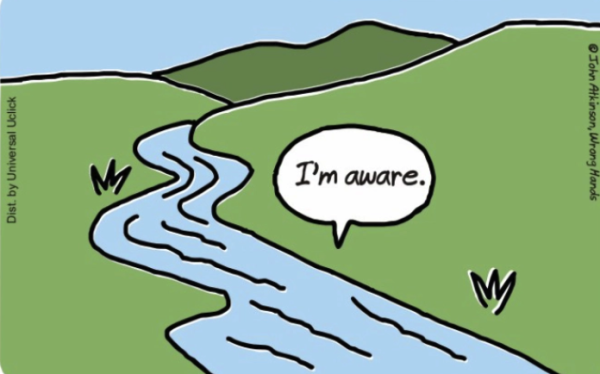We must change the filibuster
“If it ain’t broke don’t fix it” is a great mantra to justify skipping that yearly computer update or changing your oil, but just how well does it apply to one rule that’s crippling the Senate? The filibuster is “broke,” and it has been for decades, yet each party’s fear of “fixing it” is paralyzing our legislative process while Americans suffer from debilitating consequences.
The filibuster, in its original form, was a tactic used by the minority party in the United States Senate in which senators spoke for hours and hours about anything they fancied to delay a vote on a bill they were opposed to passing. The filibuster has been heralded throughout history as the great legislative moderator, protecting the will and say of the minority party by giving them an outlet to voice contention with any bill at hand. In theory, the filibuster should foster healthy debate and careful deliberation of bills, as well as force the majority party to compromise and collaborate across the aisle to pass laws palatable to a larger portion of the body politic. However, the filibuster, as it stands today, allows a minority of senators representing as little as 11 percent of the population to block every item on the majority party’s agenda without actually speaking a word, all through a simple vote which the minority wins every time.
The majority party can attempt to end a filibuster by filing a cloture motion to “close” debate. This motion requires 60 votes to move the bill to the final vote of adoption. So, while actually voting on the bill to become a law only requires a simple majority of 51 votes, most bills never even make it to this phase. It is extremely rare for the majority party to hold 60 percent of the Senate at any given time. So, hypothetically, debate could last forever under these circumstances, posing obvious threats to the law-making process.
In 1970, the majority party revised the filibuster in one small but unintentionally fatal way. From 1970 to 2020, the number of times a filibuster was used yearly increased by 350 percent due to this new rule that allowed the minority party to file an “intent to filibuster.” Filing this moves the Senate directly to a cloture vote, saving time that would be wasted prolonging an inevitable outcome. Although it was intended to streamline Senate activity, the rule actually cut out debate altogether by bypassing that essential legislative stage, making it dangerously easy for a minority party to block any bill they want at no cost to them. They didn’t need to physically hold the floor and talk to filibuster a vote, thus causing filibuster usage to skyrocket.
Transitioning from a once-in-a-blue-moon tactic to a reactionary tool levied against most modern bills, the filibuster has become more obstructive due to the increased polarization of the Senate. The extreme current polarization of Congress and the ease with which the minority party can exact a theoretical “filibuster” on the majority party’s agenda items have converged, grinding the Senate to a screeching halt. The American people have been caught in the crossfire of this disheartening partisan standstill, as it has vitiated general lawmaking and caused lengthy delays to much-needed federal support, basic necessities, and simple cabinet confirmations.
The crucial idea to understand here is that the filibuster, in essence, perpetuates something called negative partisanship, which refers to the idea that one party only theoretically succeeds by making the other party fail. In this way, both parties are at an impasse. A cycle of filibusters paralyzes the institution and makes working across the aisle nearly impossible, compounding polarization even further. It is clear that this is not a sustainable reality, so why hasn’t it been changed yet?
Both parties acknowledge the impediment that the filibuster poses to effective Senate activity, and significant revisions have been made by equally frustrated parties. However, the most oppressive element of the filibuster rule still stands, feared the most due to the unprecedented future of lawmaking its erasure would yield.
In 2013, President Barack Obama’s cabinet confirmations saw the imposition of over half of the filibusters in American history to that point. For this reason, Senate Majority Leader Harry Reid (D-NV) orchestrated a move to lower the Senate vote threshold to a 51-vote simple majority to confirm most presidential nominees–except those to the Supreme Court. Then, in 2017 when Republicans regained control and suffered serious filibuster impediments to confirming President Trump’s nomination of Neil Gorsuch to the Supreme Court, Senate Majority Leader Mitch McConnell (R-KY) engineered and detonated his own “nuclear option” to lower the threshold for Supreme Court confirmation votes to a simple majority. Within four years, two of the three uses for a filibuster were eliminated, leaving intact only the power of the minority party to filibuster legislation.
Currently, Republicans warn Democrats about the consequences of abolishing the filibuster, pointing to the inevitable time when the Democrats will once again assume the minority position. This argument makes it seem as though the filibuster is an unbiased tool that protects democracy by not allowing full majority control. However, because it actually halts lawmaking all together, the filibuster is instead currently preventing democracy, not protecting it.
In 2005, then Senator Joe Biden asserted, “At its core, the filibuster is not about stopping a nominee or a bill; it is about compromise, debate, and moderation.” This is a common argument made in opposition to abolishing the filibuster. However, it’s relatively baseless. The filibuster is not enshrined in the Constitution, and it has recently grown to be used solely as a partisan tool of obstruction. Thus, removing the filibuster will not endanger “debate” and “moderation” because the Senate is already void of any bipartisan compromise. The filibuster isn’t protecting these values; it’s preventing them by causing much deeper rifts between the parties.
Another problem with the filibuster is its racist history. The filibuster was most often wielded in the 19th and 20th centuries as a tool to combat the expansion of Black liberties. Senator John C. Calhoun, a leading proslavery advocate of the 19th century, filibustered bank charters which would have threatened the South’s economic power. Senator Strom Thurmond famously wielded a 24-hour filibuster against the Civil Rights Act of 1957, and many filibusters were used afterward to continue to inhibit the progress of the civil rights movement. The filibuster’s frequent and early use by Jim Crow defenders signifies its place in our Senate as a truly antiquated tactic, inextricably linked to the oppression of Black Americans.
The filibuster, both currently and historically, has benefited the side of reactionary forces and conservatives far more than the side of progressives and liberal bodies. Typically, Democrats and the progressive political agenda at large benefit from passing big, sweeping pieces of legislation. From expanding civil and human rights, imposing expansive market regulations, and pushing for large climate bills, most actions are only capable of being done through substantial legislation.
In this sense, it is much easier for the Republican Party to benefit from the filibuster, as it provides their minority the power to block bigger bills more regularly proposed by Democrats. The Republican Party rests on ideals of tradition and maintaining the founding integrity of the country, with less of an emphasis in passing large bills. This makes it harder for Democrats to use the filibuster as an effective tool of obstruction when they are in the minority. So how do we fix the filibuster?
More progressive Democrats argue that the filibuster is preventing the passage of urgent, life-saving legislation related to the climate crisis, healthcare inequality, racial justice, and the pandemic relief package. They assert that these issues have such a sensitive timeline that the filibuster should be abolished outright to begin aiding in these matters. Their idea is to push through as much progressive policy as they can using the power they have in this moment to do it, while also acknowledging that they won’t be in the majority forever. The ultimate goal is that this strategy creates enough lasting change and help for Americans to last them through any future conservative stretches of power.
However, while I firmly believe in the gravity of these situations and the urgency with which they must be dealt with, there is a better way to fix the filibuster than simply abolishing it and consequently aggravating Republicans, who are currently in the minority: flip the numbers. Keep the filibuster, but change the way cloture is invoked. Instead of 60 votes required to end debate on a bill, the procedure should require 40 votes to continue debate.
In this way, the filibuster becomes more like the idealized rule that traditionalists present it as, which is something to be used rarely and when a minority feels so strongly about an issue of great national significance that they are willing to make enormous sacrifices to delay a bill. They should allow them to hold the floor and actually speak about the issue, and if the minority party cannot muster 40 votes to continue the debate on the issue, the bill moves to a final Senate vote.
This way, there is a strong incentive not to filibuster everything proposed, but minority Senators will still be able to demonstrate their strong opposition to a certain agenda item. Perhaps this approach will remedy polarization, as when a minority does invoke a filibuster, they will be taken more seriously. As a result, a compromise will be more attainable because they are showing what’s truly most important to their party instead of filibustering every bill proposed by the majority.
The Senate sits in the citadel of democracy and should inspire Americans to fight for their beliefs while respecting the minds and concerns of others. We have the power and privilege as one of the most affluent countries in the world to take a leading, international role in ending the climate crisis, poverty, and racial inequality. However, the filibuster, in its current form, is precluding us from achieving this entirely attainable, unified democracy.


